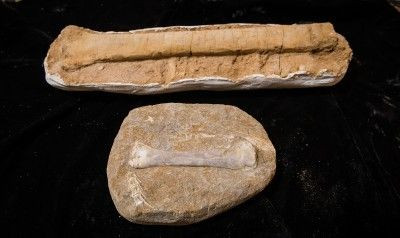Fossils Of Pterodactyls From 66 Million Years Ago Discovered, Show Untimely Death

Paleontologists have just discovered 66-million-year-old fossils that belong to six new species of pterosaurs, which are prehistoric flying reptiles. Pterosaurs, aka pterodactyls, were the flying cousins of dinosaurs and are considered to be the largest breed of ancient creatures that took flight.
Soaring on wings made of skin, supported by just a single finger, these prehistoric creatures were previously thought to have been slowly going extinct, before a massive dinosaur-killing asteroid wiped out most of Earth’s animal population at the end of the Cretaceous Period. However, hundreds of newly discovered pterodactyl fossils, found at sites in northern Morocco challenge the previous theory.
The fossils reveal that seven different pterosaurs species from three different families lived in the region during the late Cretaceous Period. In other words, the ancient creatures were abundant in numbers before the asteroid impact caused their mass extinction.
“To be able to grow so large and still be able to fly, pterosaurs evolved incredibly lightweight skeletons, with the bones reduced to thin-walled, hollow tubes like the frame a carbon-fiber racing bike,” Dr. Nick Longrich from the University of Bath, and the lead author of the study, said in a statement. “But unfortunately, that means these bones are fragile, and so almost none survive as fossils.”
The rarity of pterosaur fossils from the late Cretaceous Period led many to assume that they were going extinct. However, the new study reveals that the dearth of fossils can lead to misleadingly skewed theories and that pterosaurs were actually thriving and much more diverse than previously thought.
"The Moroccan fossils tell the last chapter of the pterosaurs' story - and they tell us pterosaurs dominated the skies over the land and sea, as they had for the previous 150 million years,” Dr Brian Andres, research associate at The University of Texas, and also a co-author of the study, said.
"This is a fabulous discovery of pterosaurs from Morocco - they tell us their amazing diversity while we thought them in decline,” said Moroccan paleontologist Professor Nour-Eddine Jalil from the Muséum national d'Histoire naturelle, who was not involved in this study but has worked with the authors on a previous study on fossils found in this area. "The Moroccan phosphates are an open window on a key moment in the history of the Earth, one that shortly preceded the global crisis that swept away, among others, dinosaurs and marine reptiles."

The newly discovered fossils reveal that these creatures weighed around 200 kilograms and had wingspans that ranged over two meters to up to ten meters – nearly three times bigger than the largest living bird. Researchers were also able to identify diversity in size and shape. The fossils also allowed the researchers to show that the species had significant differences in the shape of different body parts such as beak shape, neck length, and wing proportions, indicating that the newly identified species occupied distinct ecological niches.
“I believe there are many more species to find,” Dr. Longrich said.
“Exciting discoveries are being made all the time, and sometimes, just the smallest of bones can radically change our perception of the history of life on Earth,” co-author of the study, Professor David Martill from the University of Portsmouth said.
The new study has been published in the journal PLOS Biology.
© Copyright IBTimes 2024. All rights reserved.




















